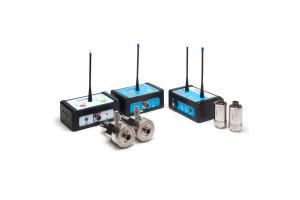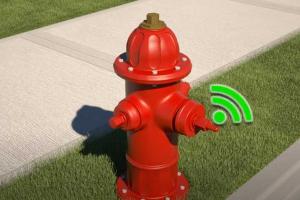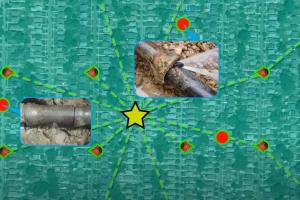Winning Big in Las Vegas with Acoustic Condition Assessment
The assessment found that the majority of the pipeline, which LVVWD initially expected to replace at the cost of nearly $10,300,000, was still in good structural condition, as it contained more than 95 percent of its original wall thickness.
Situation
The Las Vegas Valley Water District (LVVWD) began providing water to the Las Vegas Valley in 1954. Over the years, the city’s water delivery system has grown to more than 4,500 miles of pipeline, 350,000 service connections, and a reservoir system capable of storing more than 900 million gallons of water. Today, the district provides water to more than one million people in Las Vegas and Clark County Southern Nevada.
According to the USEPA, 700 water main breaks occur every day in the U.S., amounting to approximately 250,000 breaks each year. And, on average, 14 percent of treated water is lost to leaks. The LVVWD has a relatively young water infrastructure that experiences very few main breaks per mile as compared to other major utilities and has less than 6 percent losses. However, some of its pipes have started to fail more often due to corrosion and other factors.
A particularly troublesome section of pipe was part of a 6.5-mile span of 16-24" mortar-lined steel cylinder pipeline that ran underneath some of the city’s most popular thoroughfares. The pipe was installed in the 1950s without any cathodic protection or corrosion control and had experienced three main breaks over the past 5 years. While examining a break that occurred underneath a section of the famous Las Vegas Boulevard, crews noticed that the pipe walls had been worn thin due to corrosion. Seeing the pipe’s deteriorated condition, LVVWD expected that it may have to replace the entire 6.5-mile span of pipe—a major expense that could cost the LVVWD as much as $300 per foot of pipe (a total cost of nearly $10,300,000) and would disrupt busy roadways.
Action
To prioritize sections of pipe that were in most need of repair, LVVWD turned to us, a leader in the development of water infrastructure diagnostic technologies for water loss management, leak detection, and pipe condition assessment. A subsidiary of Mueller Water Products, Inc., we help utilities across North America cost-effectively prioritize water system repairs and replacement and detect leaks for improved water conservation. Its technology uses a proprietary acoustic-based leak detection system that non-invasively assesses the structural condition of selected pipes.
LVVWD was already familiar with us, as its distribution maintenance crew regularly uses the company’s acoustic listeners and correlators to detect leaks on smaller-sized pipes throughout its system. However, before leveraging us for such a large-scale assessment project, Ryan Benner, Maintenance Engineer for LVVWD, and Charles Scott, the district’s Engineering Project Manager, wanted to gauge the accuracy of our condition assessment capabilities.
LVVWD had us assess the condition of a section of 6" asbestos cement pipe that had been scheduled to be abandoned. After the test, the unearthed sections of pipe were sent to a lab specializing in asbestos cement pipe testing. The lab results were compared to the condition assessment report provided by us and found to be nearly identical. As a result, LVVWD selected us to conduct the assessment project.
Results
Our team and LVVWD assessed the entire 6.5 mile span of pipe in only two weeks. The assessment found that the majority of the pipeline, which LVVWD initially expected to replace at the cost of nearly $10,300,000, was still in good structural condition, as it contained more than 95 percent of its original wall thickness.
In addition, a number of previously unidentified leaks were identified by us, and LVVWD was able to quickly repair them, helping to reduce non-revenue water and prevent future water system and roadway damage. Ultimately, only 15-20 percent of the pipes in the system were found to have lost a significant amount (more than 15 percent) of their original wall thickness to corrosion and other factors, and were prioritized for renewal.
By working with us, LVVWD was able to efficiently address non-revenue water and prioritize system replacement by getting a thorough, non-invasive assessment of the pipeline’s structural integrity—without breaking ground or disrupting the city’s busy streets that are vital to its tourism industry. And, by identifying that only a fraction of the system was in poor condition and needed to be prioritized for renewal, the district was able to avoid needlessly spending millions of dollars on the premature replacement of the entire pipeline.
LVVWD has since initiated a similar program that leverages the same acoustic-based leak detection system to assess the condition of a section of asbestos cement pipe. To date, most of the pipeline has been confirmed to be in good condition and LVVWD has been able to locate and prioritize several sections of degraded pipe for rehabilitation.





